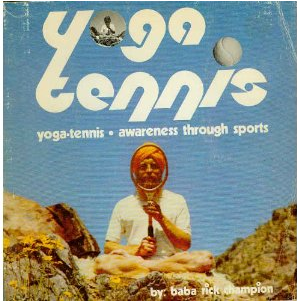I’m a tennis player and fan.
For some time now, I have been a Roger Federer fan. So, of course, I was pleased to see him play well in Melbourne, but disappointed when he lost to Rafael Nadal in the semi-finals of the Australian Open.
Federer displays incredible fitness and style of play. I don’t know if Roger practices yoga, but his play illustrates the benefits that yoga has had in my own tennis game.
While Rafa has missed many tournaments (indeed seasons) due to injury, Federer accumulated a record number of grand slam titles, and significant records for his consecutive appearances in grand slam quarters, semis and finals. Federer could not have amassed those records without a consistently healthy body and mind over the span of many years.
I have had the privilege of watching Roger Federer play tennis live, not just on TV, and his movement and grace remind me of my Ashtanga Vinyasa practice. Further, many players resort to loud screeching or grunting to reenforce breathing or keep them from holding their breath. Federer doesn’t need to resort to forced breathing devices. He never gasps or seems winded, and his movement seems to be coordinated with his breath.
In my own game, the use of steady metered ujjayi breath has kept my heart rate steady in matches, helped me coordinate my strokes with my breath and allowed me to play long three set matches without muscle or mental fatigue. Thanks to yoga, I don’t hold my breath or get stressed when I play.
Another aspect of Federer’s game is the fluidity of his movement. He embodies the balance of sthira and sukha. Sthira refers to what is solid and strong; sukha to what is easy and free of obstacles.
As my teacher Kewal likes to say, if you are too stihra (strong) but not flexible, you will hurt yourself, but if you are too sukha (flexible and relaxed), without strength you will hurt yourself too. Master teachers like Bryan Kest point out too much flexibility creates instability; too much strength creates a tighter, more rigid body. The former typically leads to joint-related injuries: wrists, shoulders, lower back and the hip-joint injuries reported among flexible students who push too far.
Nadal’s knee problems have been consistently attributed to tendonitis—hmmm. Federer seems to have achieved this balance, while it is possible that Nadal looks like he is powering his shots, with little ease.
The other day, I was listening to Sadie Nardini talking about the difference between popping into a camera ready pose, and arriving at an asana through whole body/breath coordination. One is asana, the other is yoga. In tennis, you may look good when you muscle through your serve or your forehand, but the resulting stress in your body will be bound to lead to discomfort, and probably injury over time.
My tennis coach likes to remind me to complete a full shoulder rotation in my stroke, but through the prism of yoga I understand that what he really means is to integrate my whole body as my shoulder, and by extension, my arm complete a stroke. Doing it the second way achieves a stronger shot, with less stress on the body.
The balance of strength and ease also has mental dimensions. When Federer, who is just as susceptible to the passage of time as the rest of us, was asked about retirement, he expressed the joy he still derives from playing, even if he is no longer ranked number one in the world. The ability to take the competition seriously without taking himself too seriously ensures that his career is far from over.
One of my greatest memories of him is watching him on a warm up court in Indian Wells, California. The smile and relaxation expressed on his face and body spoke volumes. In my yoga practice I have learned to be content in the present. I know that some days I can nail headstand, and somedays, I do a fancy somersault, but neither the success nor the tumble define me.
On the court, I am neither defined by my last ace nor my last double fault. Being able to reside in the present point has been a tremendous gift, and has pulled me out of many deficits; I can be losing a match and not let the score deficit define me.
In short, all the things I have learned about yoga I can see in Federer’s play, and I am enjoying the results from my yoga in my own game.
Love elephant and want to go steady?
Sign up for our (curated) daily and weekly newsletters!
Editorial Assistant: Todd Otten/Editor: Rachel Nussbaum
Photo: elephant journal archives











Read 2 comments and reply